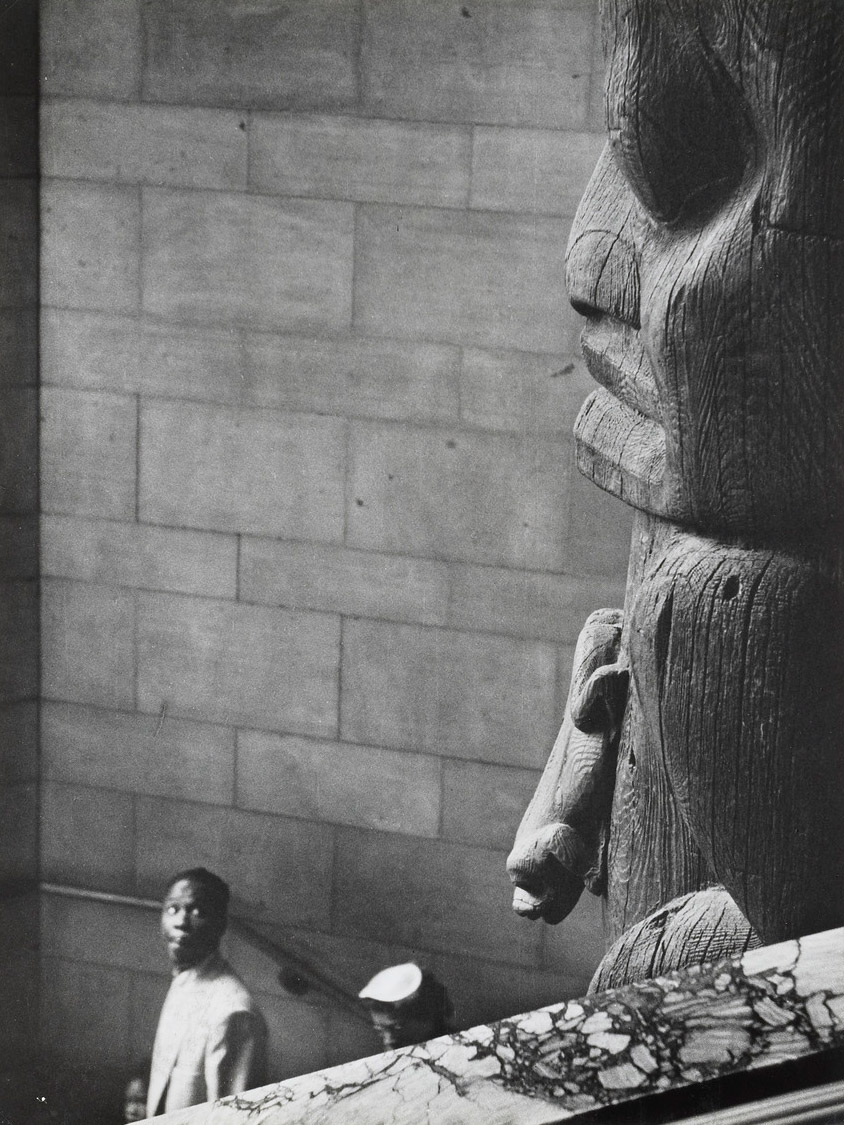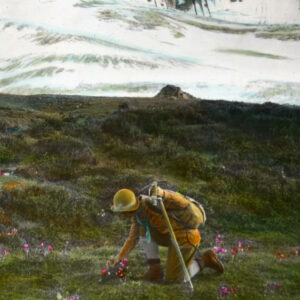Thomas Henry (Michel) Lambeth (1923–1977, Toronto)

Royal Ontario Museum, Toronto, 1957
Gelatin silver print, 33.7 x 25.6 cm
Art Gallery of Ontario, Toronto
Michel Lambeth (1923–1977) is best known for his photographs taken in the streets and community spaces of Toronto that provide a personal portrait of the city full of unexpected viewpoints and connections. In Royal Ontario Museum, Toronto, Lambeth closely crops a massive totem pole in a stairwell to highlight the contrast in scale between two visitors and the familiar city landmark.
-
Michel Lambeth, School Children, St-Nil, 1964
Gelatin silver print, 16.5 x 24 cm
Library and Archives Canada, Ottawa
-
Michel Lambeth, Michael Snow, Toronto, ON, 1960
Gelatin silver print mounted on board, 32.7 x 23.7 cm
Library and Archives Canada, Ottawa
-
Michel Lambeth, Little girl watching the photographer as the crowd behind her watches the Grey Cup Parade, 1965
National Film Board Still Photography Division Archive, National Gallery of Canada, OttawaThis image was included in the National Film Board–produced book, Call Them Canadians: A Photographic Point of View (1968).
After serving in the Second World War, Lambeth stayed in Europe to study art in London and then Paris, where he changed his name from Thomas Henry to Michel. He returned to Toronto in 1952 and began working as a clerk at City Hall while writing, making art, photographing the city with his Leica, and experimenting with film. His interest in photography as art and as a form of personal expression guided his career. But after leaving his city job in 1959, he took on work as a photojournalist and was more engaged in social causes and activism. His photographs of poverty-stricken St. Nil, Quebec, were rejected by Star Weekly in 1964 for being too critical and grim, but they were later acquired and circulated by the National Film Board.
From about 1960, Lambeth produced portraits of the artists associated with the influential Isaacs Gallery in Toronto—his 1960 photograph of Michael Snow (1928–2023) is an early example—and in 1965, Av Isaacs gave Lambeth a solo exhibition, a rare opportunity for a Canadian modernist art photographer. At the time Lambeth was concerned about American cultural imperialism and fought to articulate and protect what he saw as a specific Canadian cultural context by leading protests at Canadian institutions, refusing invitations to show his work in the United States, and working with the Canadian Artists’ Representation group.
In 1967, Lambeth published a selection of gritty photographs of Toronto from circa 1910, under the title Made in Canada, that he had first exhibited at the photo-based artist-run centre Mind and Sight. Although he did not know it at the time, the photographs Lambeth had collected were made by Arthur Goss (1881–1940), official photographer for the City of Toronto. Lambeth believed that Goss’s work testified that Canada had pioneers of social documentary photography akin to Americans Jacob Riis (1849–1914) and Lewis Hine (1874–1940), photographers who were attentive to “working conditions, health, housing, education, sanitation, children.” In these historical photographs of Toronto, Lambeth saw a precedent for the work he was trying to do decades later.

 About the Authors
About the Authors
 More Online Art Books
More Online Art Books
 Acknowledgements
Acknowledgements